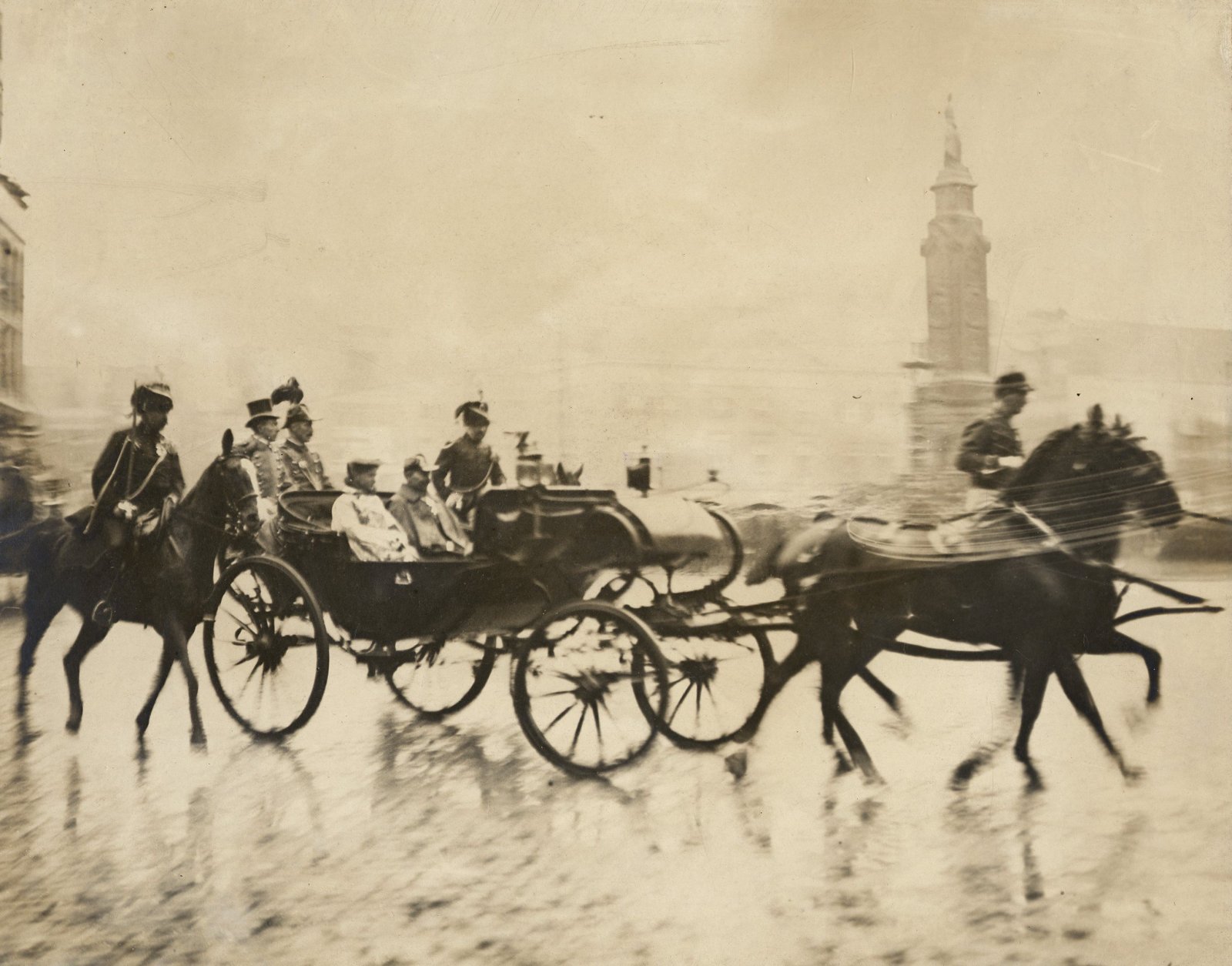‘Queen of Peace’ Wilhelmina came to the rescue of Kaiser Wilhelm II
Beatrice de Graaf discovers:
On 9 November 1918 Kaiser Wilhelm II fled from Germany to the Netherlands. The Dutch government has always claimed that it was caught unawares by this. Based on new source material Beatrice de Graaf, Professor of the History of International Relations, asserts that Queen Wilhelmina played a much more active role in the Kaiser’s fleeing to the Netherlands than has always been assumed. De Graaf’s discovery features in the Tijdschrift voor Geschiedenis (historical magazine). The Dutch history programme on television Andere Tijden devotes attention to the discovery in its episode ‘Stille Getuigen. 100 jaar na de Eerste Wereldoorlog’ (Silent Witnesses. 100 years since the First World War).

Towards the end of her long life Princess Wilhelmina (1880-1962) still struggled to express her surprise about Kaiser Wilhelm II’s fleeing to the Netherlands on 10 November 1918. ‘It would be no exaggeration for me to say that it was a week, maybe more, before I could believe the messages that were coming in, so improbable did this course of action seem’, she wrote three years prior to her passing in her autobiography Eenzaam maar niet alleen (Lonely But Not Alone). Her biographer Cees Fasseur stated that he had no reason to ‘doubt her words’.
‘Uncle Willy’
Beatrice de Graaf did always doubt her words, however. Even if that doubt was merely down to the fact that Wilhelmina’s relationship with ‘Uncle Willy’ had always been a close one. Meaning she must have been informed of his coming in advance. She found strong indications of this thesis being correct in Berlin archives, which to the best of anyone’s knowledge have not previously been consulted by Dutch historians. ‘That was truly such a wonderful moment of historical excitement’, finding traces of an historical event that had totally escaped our notice after long suspecting and long searching in several obscure legacies from diplomats in the archive in Berlin.
After all, says De Graaf, Queen Wilhelmina was concerned with, perhaps even extremely worried about the fate of Kaiser Wilhelm II in a way that does not chime with the assumptions made in the historiography and in her biographies. From the summer of 1918 onwards there was close consultation between the circles surrounding Wilhelmina and Prince Hendrik, the German imperial court and the Ministry of Foreign Affairs. The plan was to broker a so-called Verständigungsfrieden, a peace agreement based on compromise. The Peace Palace in The Hague was to become the setting for a major peace conference, with Wilhelmina as hostess or even chairwoman. The Americans seemed to think this was a good idea. And so did the Kaiser.
Human side
De Graaf takes the view that Wilhelmina’s biographer’s comment that the queen did not show ‘her human side’ in dealing with Kaiser Wilhelm II is ripe for revision. Wilhelmina was caught between her calling as monarch of the Netherlands and her responsibility as head of her ‘house’. Wilhelm II was a prince of Orange and a fellow monarch in need. The Romanovs had already perished on the revolutionaries’ chopping block in the summer of 1918.
Wilhelmina’s assistance was anxiously hushed up both before and after the war
Wilhelmina’s assistance was anxiously hushed up both before and after the war. It was far from always the case that what Wilhelmina and Minister of Foreign Affairs Herman van Karnebeek did was reported to the rest of the ministers, let alone officially reported to the Cabinet. Nevertheless, decrees and decisions made by the Cabinet were shared with German diplomats, which is how the ones found in Berlin will have ended up in the archive.
With its sights set on a seized merchant fleet, Belgian claims, and a desire to accede to the League of Nations, the Netherlands were not in a position to snub the signatories to the Entente. Hence after the end of the war, whilst the peace talks were under way in Versailles and the Netherlands were under pressure to extradite the Kaiser, it would not have been possible or permissible to let slip that Wilhelmina had been personally involved in German-Dutch peace initiatives, or in possible preparations for Kaiser Wilhelm’s escape. Which would also explain why she decided never to meet the Kaiser in person. After all, that would immediately catch the attention of the press and lead to considerable public outcry at home and abroad. According to De Graaf, this move was prudent and in line with national interest.
Research in German and French archives
The Netherlands nevertheless managed to hold their own on the world stage, despite (or perhaps because of) Wilhelmina’s neutrality. This is emerging from research being done not in Dutch archives but rather in German and French archives, over which the Dutch government had no control. Beatrice de Graaf concludes that it’s always worthwhile regularly revisiting received ideas and subjecting to scrutiny the source material that underlies established interpretations. To be sure, small, neutral countries like the Netherlands were capable of playing a much more significant role than is assumed to be the case. And even the role of the monarchs was not yet over in 1918.

